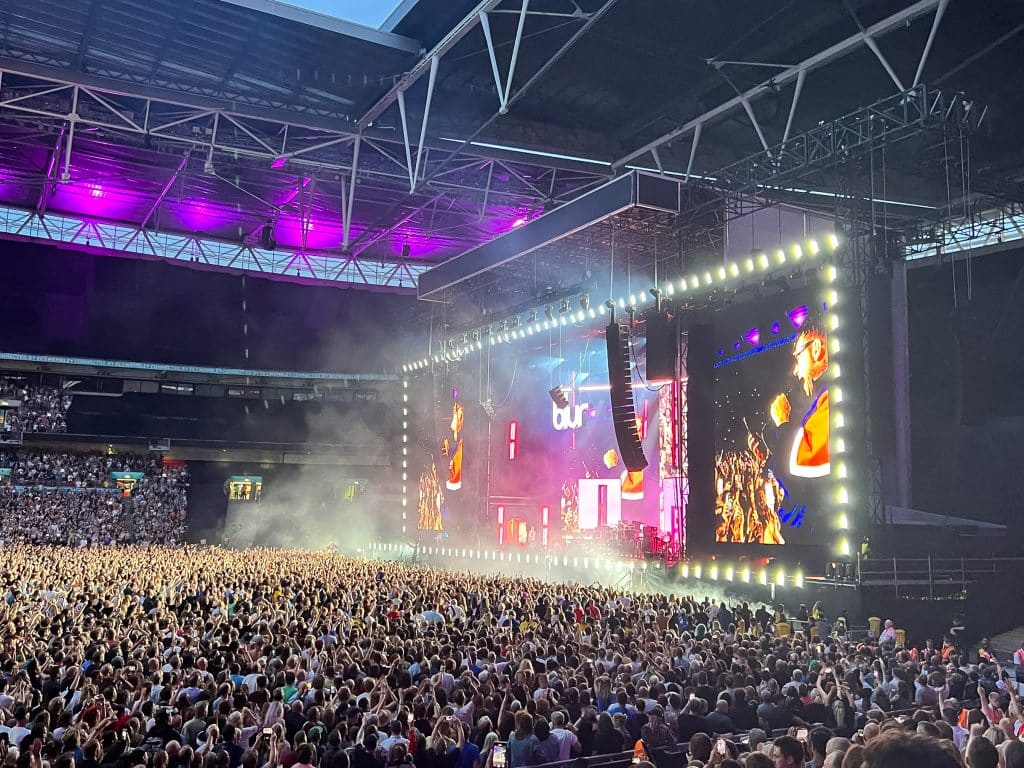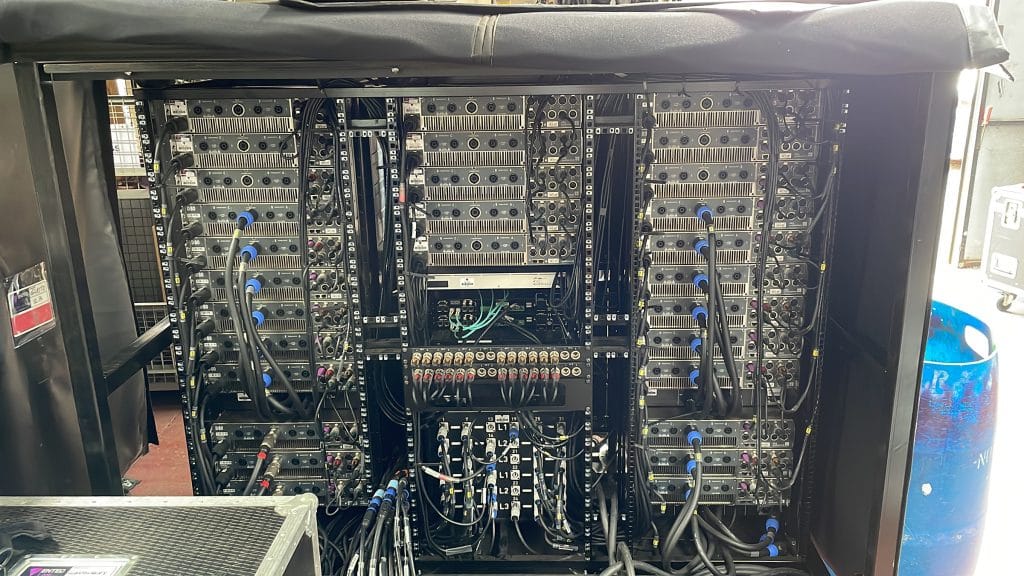M8-BNC and X6R-FX converters added for Gorillaz / Blur and bigger arena shows

Entec Live has extended its investment in Optocore fibre network devices, expanding its Record and Returns racks capabilities—thereby future-proofing them for the growing roster of arena, stadium and festival events they are undertaking.
This was after the production company had invested in its first three M8-BNC MADI switches for the Gorillaz world tour early last year. Supplied by Optocore dealer, HD Pro Audio, the devices were designed to help optimise their Pro Tools rig, enabling connectivity with their Optocore-enabled DiGiCo SD7 digital consoles.
So successful was the deployment that this year they recently added a further M8-BNC, but equally significantly five X6R-FX-16AE interfaces (one with SRC sample rate conversion option, the other four without) … creating an Optocore PA Returns rack that will become their de facto system for shows over the next year. Again, the order was fulfilled by HD Pro Audio.
Explaining the systematic upgrade, Entec Live Technical Manager, Peter Eltringham, said, “Gorillaz—and by extension Blur—now have a Record rack that sits on the Opto loop with the two consoles—and allows them to do virtual soundcheck; they can multitrack record the whole gig, and can listen to play back at both ends of the multicore.
The Pro Tools record rig has a capability of 196 channels at 96K, and Entec Live deployed three M8’s to get the channel count required. There was no point getting the devices with more BNC connectors because you can’t use them in that set-up so we bought three of the M8 units and they’ve been absolutely great.” This was extended with the addition of a further M8-BNC this summer.
As for the deployment of the new X6R converters, these made their debut with Blur at their two recent Wembley Stadium shows. Eltringham explains that the four devices without SRC provide AES output in the amp racks. “Two AES units in each amp rack provide hardware redundancy, over and above the redundant power and loop topology that Optocore units provide. Tis means our backup signal to the amplifiers is the same as our main, maintaining audio quality.

“The design for the amp racks was never to have signal coming in, so they didn’t require SRC; however, the other one at FOH is effectively the ‘ingest’ for the system and does have sample rate conversion; this can handle different incoming signals without a problem and feeds it out to the units in the amp racks.”
“It’s really the entire backbone for distribution, with a DirectOut Prodigy which is the drive system that sits on top of it,” adds Entec Head of Sound, Dan Scantlebury. “So we can run AES out of that into the SRC-enabled device.” The SRC-equipped converter gives them the ability to use various different processors. We’re not locked to just using the Prodigy, we can use Lakes, we can use Newtons, whatever we want really on the same fibre backbone.”
Entec took over The Other Stage at Glastonbury this year and the new Optocore drive system will be deployed there next year—as well as many other sites—as they move away from Dante.

Peter Eltringham explains the rationale:
“We had been talking about moving over to Optocore for PA returns, sending the signal back towards the amps, for a while. Technology like Dante and other networked topologies offer flexibility but the great thing about Optocore is it does one job and does it extremely well, on its own separate system. It handles the task of audio transport so well and reliably that you simply trust it for your console. When people ask about the redundancy and resilience, I simply say, ‘Well your FOH mixing desk runs on that system and you trust that’. If you trust it for your FOH desk, for your monitor desk, for your broadcast you can trust it to get the signal back to the PA.”
“We had been talking about moving over to Optocore for PA returns, sending the signal back towards the amps, for a while. Technology like Dante and other networked topologies offer flexibility but the great thing about Optocore is it does one job and does it extremely well, on its own separate system. It handles the task of audio transport so well and reliably that you simply trust it for your console. When people ask about the redundancy and resilience, I simply say, ‘Well your FOH mixing desk runs on that system and you trust that’. If you trust it for your FOH desk, for your monitor desk, for your broadcast you can trust it to get the signal back to the PA.”
He continues, “Too many times I have been in a situation where the wrong connector in the wrong place has ruined the Dante network or has pressed the wrong check box and there’s really not a lot of that you can do wrong with Optocore. There’s not the temptation as with other network protocols to put other traffic on it so that all of a sudden it falls over and you’ve lost your show.
“This is the start for us, and in time we can tack more things onto the loop. Although this time around at Wembley we used just AES to talk to the delay amplifiers, in future iterations we could easily add in some extra devices and extend the loop.”
In conclusion, Dan Scantlebury foresees further investment in Optocore’s advanced fibre solutions as the scale of events Entec Live undertakes warrants a higher level of redundancy to safeguard larger shows. “This will basically now be our arena return system for the rest of the year,” he reinforces. “And it’s infinitely expandable.”—but because Optocore is so useful dry hiring it is practically impossible as it’s always out on tour!”